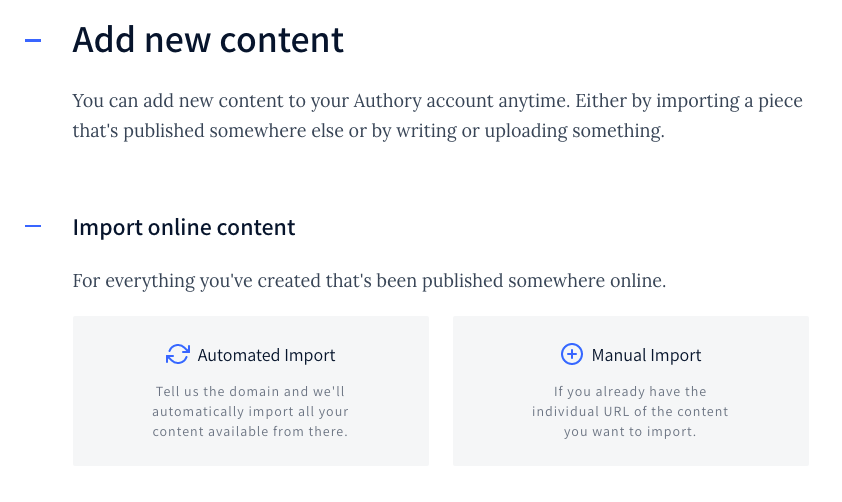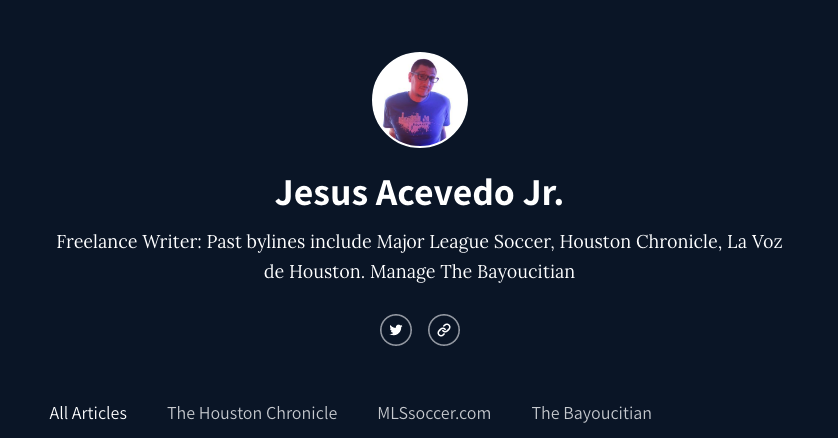Any freelance journalist knows that a portfolio is a must-have.
A portfolio is a journalist’s currency that showcases all of their written work. In the old days, a portfolio was probably a manilla folder with loose newspaper or magazine clips.
There are many ways a journalist can keep their clips together, from compiling them as PDFs to saving them on Google Drive in the digital age. More recently, an online portfolio platform, Authory, has entered the conversation, and without a doubt, it surpasses any other digital portfolio currently in the marketplace.
While there may be other online portfolios for writers, they lack the simplicity that Authory provides. Better yet, Authory gives you a 14-day trial to take it for a spin. After those two weeks, an annual subscription is $96, or you can opt to go the monthly route at $10 a month.
Ease of use & organization
Starting your portfolio on Authory couldn’t be easier. To set up your Authory page, head to authory.com and create your profile. You’ll add your name, include your social media link, and write a bio.
This information will be the first thing visitors see when they visit your Authory page. The bio description can be as short as long as you want.
With your profile created, the next step is importing your articles. And Authory gives you two ways to do it.

The first way involves adding the URL of the article yourself. Authory will then pull the article and include it in your portfolio. The second option, however, is what really sets Authory apart.
Give Authory the name and URL of a publication and Authory will automatically search that publication and pull any articles with your byline. It will then add them to your portfolio.
Here’s where Authory stands out from the pack as it relates to the visibility of a writer’s clips. The platform gives you the option of three visibility modes to set your articles.
- Preview: The default setting for all articles. With this setting, the article will display a preview with a headline and picture on your Authory page. When a visitor clicks on the link, it will take them to the original publication source.
- Public: This setting allows visitors to your Authory page to view and read the perspective article on Authory itself. This is a handy option if you want to save visitors a click.
- Private: This setting hides the article entirely from an Authory profile. Visitors won’t even see a preview of it.
With so many options, a user can pick and choose which setting to have on each individual article. But wait, there’s more.
Authory will continue to pull articles from the publications you have already added to Authory. Any new article that appears on that publication will appear on Authory profile within a day. Talk about a time saver.
And if that wasn’t enough, Authory also backs up your work. So if the URL to your article becomes a broken link, rest assured the article will live on in Authory.
For journalists that have written for many publications, Authory allows them to group them by publications. Authory calls this organization tool, Collections. And the name fits.

The Collections are grouped right under your profile bio. Anyone visiting your profile can click on the publication and see all your articles from that publication.
Collections is a great organizational tool because, without it, Authory’s default display lists articles by date, with the newest article at the top.
Newsletter & analytics
A couple of other features that I found interesting are the newsletter option, and the analytics Authory gives you.
With newsletters being all the craze at the moment, Authory allows you to create your own using your articles as the content. And as with everything else, starting a newsletter is easy as pie. Your readers provide their email, and Authory does the rest. When there’s new content, Authory transforms it into a newsletter to be delivered daily or weekly.
The last feature that gives Authory a leg up over other similar digital portfolios is its users’ analytics. The social media analytics provided by Authory gives users a view of how their work performs on social media.

Final thoughts
There are many digital portfolios to choose from, Contently and Muck Rack come to mind, but where Authory stands apart is in its simplicity. While others require a journalist to update the portfolio, Authory does the work for them.
Full disclosure, writing this review gives me a year’s worth of Authory for free, and if by chance you sign up using any of the links in this article I get an additional month. But honestly, even if Authory didn’t have this special deal, I would use the platform.
A writer could set up their Authory profile and have their entire list of work for display in a couple of days. From then, a writer can share their Authory page on their social media bio, and better yet, use it to get more work.
If there’s room for improvement it would be to give a visitor to read the article in the original publication as opposed to solely on the Authory platform. As of now, there’s no link that allows a visitor to see the article in the original publication.
Regardless, when searching for a digital portfolio, Authory is the way to go.
Jesus Acevedo Jr. is the Editor-in-Chief of The Bayoucitian. He’s an award-winning bilingual journalist from Houston, TX. A graduate of the University of Houston, he has written for the Houston Chronicle, La Voz de Houston, MLSsoccer.com, and ProSoccerUSA.
Before becoming a journalist, Jesus spent his early 20s drumming his way across Houston with two bands — Shortcomings and InsertNameHere. The memories that Jesus made as a musician were the seeds that started the idea for the comedy, Houmans: The Series.
